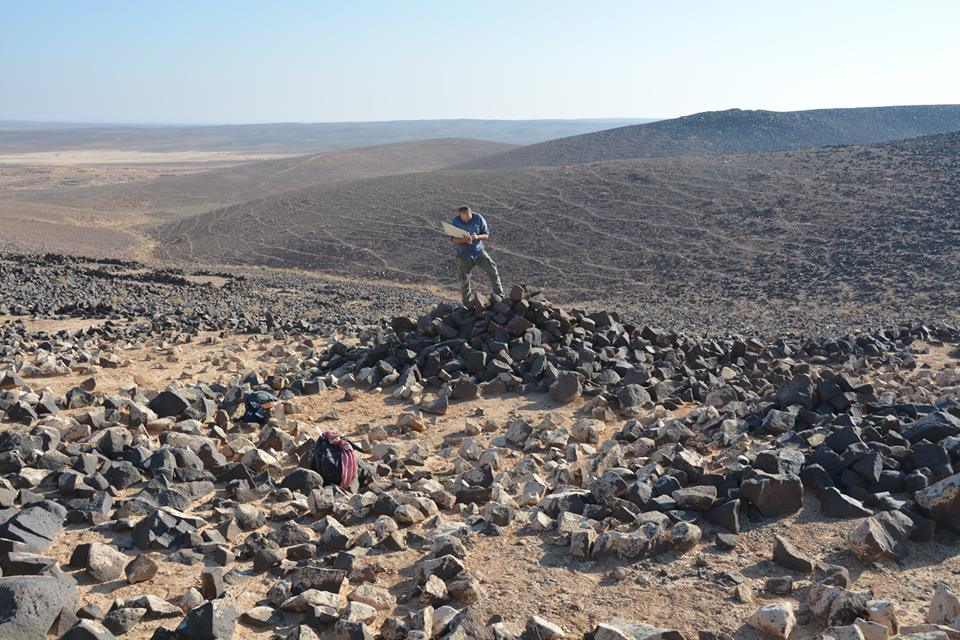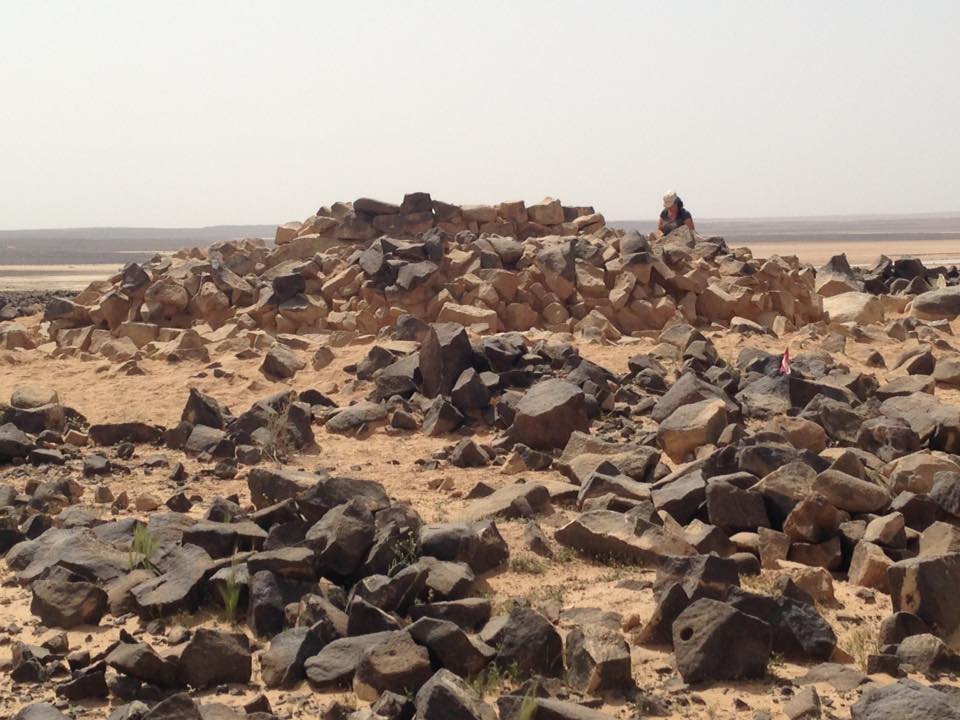In Photos: Tomb Discoveries in the Land of 'Dead Fire'
A desert in Jordan

A team of archaeologists with the Jebel Qurma Archaeological Landscape Project are discovering and recording hundreds of tombs in Jebel Qurma, a desert in Jordan that is so barren that one early explorer called it a land of "dead fire." While the area is now sparsely populated it teemed with human life in ancient times. This photo shows an archaeologist on a cairn, a pile of rocks that holds a burial.
[Read the full story on the Jordan tomb discoveries]
Life change

A giant cairn which dates back to the second or third century A.D. Study of the cairns and their burials give archaeologists valuable information on how human life changed in the region over time.
Tower tombs

A 3D model showing a "tower tomb" atop a cairn. These massive tombs started appearing in the first millennium B.C. Recent research shows that tower tombs are widespread in Jebel Qurma. The reason why people started building them is unknown.
Strange finds

This enclosure was built about 8,000 years ago and was reused sometime between A.D. 100 and 400.
From the Iron Age

This cairn dates back more than 2,500 years to the Iron Age. Research suggests that between the late third millennium B.C. and early first millennium B.C. there may have been a period when people stopped living in Jebel Qurma. Archaeologists are trying to determine if they stopped living in the region and, if they did, why they left and returned a millennium later.
Series in a line

If you look closely you can see a series of small cairns built in a straight row. They ultimately lead to a burial.
Get the world’s most fascinating discoveries delivered straight to your inbox.
[Read the full story on the Jordan tomb discoveries]
Damage done

Many of the cairns and tower tombs have been robbed. This cairn was robbed by a group of looters who used mechanical equipment to dig a hole about 5 meters (16 feet) deep.
Archaeologist's find

Sometimes archaeologists will find a cairn or tower tomb that hasn't been robbed. This photo shows a skeleton found in its burial chamber.
Native life

The landscape is not completely devoid of life. This photo shows an Arabian horned viper found amidst archaeological remains. It's a venomous snake best left alone.
More to come

Future studies will look at how the environment in the Jebel Qurma region changed over time.

Owen Jarus is a regular contributor to Live Science who writes about archaeology and humans' past. He has also written for The Independent (UK), The Canadian Press (CP) and The Associated Press (AP), among others. Owen has a bachelor of arts degree from the University of Toronto and a journalism degree from Ryerson University.


